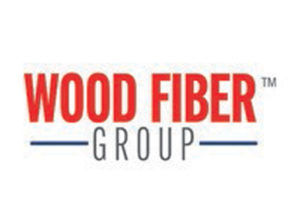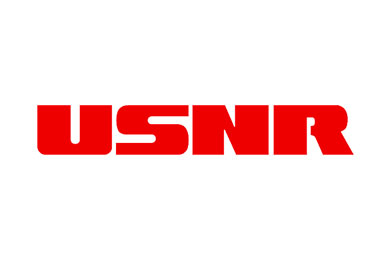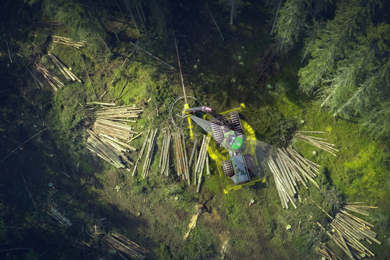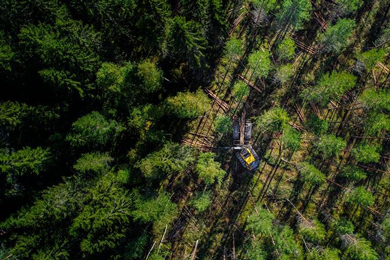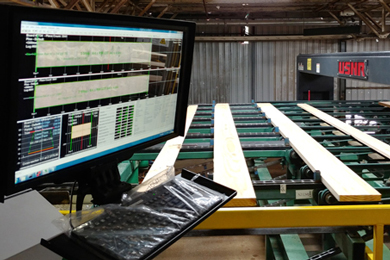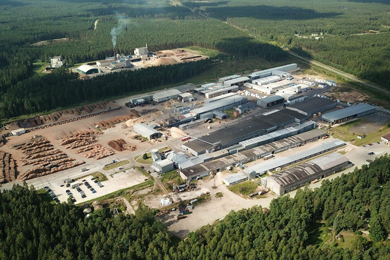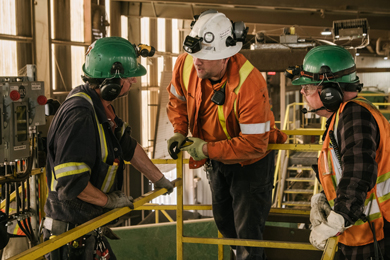Treaty 6 Territory, SK — Pelican Lake First Nation, Witchekan Lake First Nation, and Tolko Industries Ltd. (Tolko) have announced the launch of Kitaskinaw Enterprises Ltd. (Kitaskinaw), which enhances the ability for Pelican Lake and Witchekan Lake First Nations to further their expertise as a logging contractor and develop future business opportunities in sustainable forestry. Kitaskinaw, meaning “our land” in Cree, affirms the importance of the tie to the land of the Pelican Lake and Witchekan Lake First Nations.
Kitaskinaw will initially focus on the development of a logging company with long-term growth in harvesting, biomass, and silviculture. This includes training for Indigenous youth and women, both on-reserve and off-reserve, in both forestry and mill positions as well as other future business opportunities such as trucking. The Limited Partnership corporation is co-owned by Pelican Lake First Nation, by Witchekan Lake First Nation and by Tolko.
“We’re pleased to launch Kitaskinaw with Pelican Lake and Witchekan Lake First Nations,” said Brad Thorlakson, President and CEO of Tolko. “The Nations have a strong vision that will strengthen Tolko in the Meadow Lake region and help ensure long-term business success and sustainability.”
Chief Peter Bill of the Pelican Lake First Nation said, “Our land has sustained many generations and this partnership helps ensure our continued influence today and in the future. Land protection, culture, reforestation, renewable energy, and jobs for our land and people is critical. This partnership with Witchekan Lake and Tolko will help with achieving those goals.”
Chief Anne Thomas of the Witchekan Lake First Nation added, “Building businesses helps ensure the long-term success of our people in jobs and in guiding future developments. We are pleased to make this investment with Tolko and Pelican Lake.”
About Pelican Lake First Nation
Pelican Lake First Nation is a Cree First Nation that signed Treaty 6, in northern Saskatchewan, in 1889. Today, their economic base includes forestry, tourism, agriculture, fishing, trapping, and several businesses. Additionally, the Nation manages community infrastructure including schools, a firehall, and a health clinic.
About Witchekan Lake First Nation
Witchekan Lake First Nation is a Cree First Nation that signed Treaty 6, in northern Saskatchewan, in 1950. Today, their economic base includes forestry, tourism, agriculture, fishing, trapping, and a community pasture. Additionally, the Nation manages community infrastructure including a school, a firehall, and a health clinic.
Photo: (L to R) Kevin Jewett, Tolko VP Woodlands, Chief Anne Thomas, Tolko President and CEO Brad Thorlakson, Chief Peter Bill at an earlier signing ceremony in 2019
About Tolko
Tolko is a leading manufacturer of a wide range of forest products for customers around the world, including lumber, plywood and veneer-oriented strand board co-products, biomass power, and a growing number of specialty wood products. For more than 60 years, our family-owned company has delivered reliability, flexibility, efficiency, and quality. We hold third-party certification on the forestlands we sustainably manage in British Columbia, Alberta, and Saskatchewan, and we play an active role in the communities where our employees live and work.
For more information, contact:
Tolko:
Chris Downey, Communications Advisor
M: 250.306.0929
Chris.Downey@tolko.com
